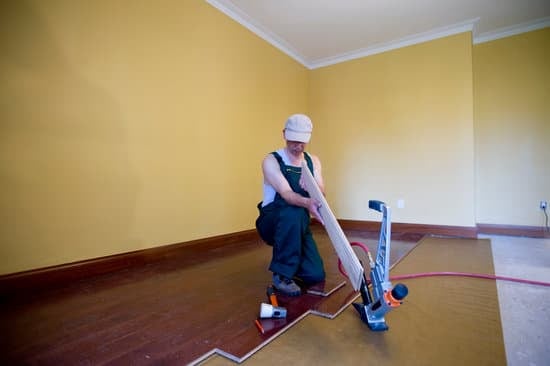When it comes to home improvement projects, finding the necessary funds can often be a daunting task. However, homeowners have a valuable tool at their disposal – refinancing. By refinancing your existing mortgage, you can potentially unlock the funds needed to transform your house into your dream home. In this article, we will delve into the concept of refinancing for home improvement and explore its benefits.
Refinancing is essentially replacing your current mortgage with a new one that offers better terms and interest rates. While many people think of refinancing as a way to lower their monthly mortgage payments, it can also be an excellent option for financing home renovation projects. By tapping into the equity you have built in your home over the years, you can access cash that can be used towards remodeling, repairs, or any other improvements you desire.
One of the primary benefits of using refinancing for home improvements is the potential for lower interest rates compared to other types of loans. Additionally, certain renovations may even increase the value of your home, allowing you to recoup some or all of the costs when you decide to sell. Furthermore, depending on where you live and specific circumstances, there may be tax benefits associated with using a refinance loan for home improvement purposes.
In the following sections, we will guide you through assessing your financial situation and determining if refinancing is right for you. We will explore various refinancing options tailored specifically for home improvements and take you step-by-step through the process. Additionally, we will discuss important factors to consider and provide valuable tips and tricks based on real-life success stories.
By understanding how refinancing works and weighing all relevant factors before making a decision, homeowners can confidently proceed with their home improvement plans while taking full advantage of available financing options. So join us as we dive deeper into this topic and empower you to make informed decisions when considering whether to refinance your home for home improvement purposes.
Assessing Your Financial Situation
Assessing your financial situation is a crucial step in determining whether or not you are ready to refinance your home for home improvement. This section will guide homeowners through evaluating their current mortgage terms, equity, credit score, and other factors to determine if refinancing is a viable option for them.
Evaluating Your Current Mortgage Terms
The first step in assessing your financial situation is to carefully evaluate your current mortgage terms. Take a close look at the interest rate, monthly payment, and remaining loan balance. Consider how long you have left on your mortgage and if refinancing could potentially result in more favorable terms. For example, if interest rates have dropped since you initially obtained your mortgage, refinancing could allow you to secure a lower interest rate and reduce your monthly payment.
Considering Your Equity Position
Equity refers to the portion of your home that you own outright – essentially, the difference between its market value and the amount you owe on your mortgage. Assessing your equity position is essential as it determines how much money you may be able to borrow for home improvement projects through refinancing.
Generally, lenders prefer homeowners to have at least 20% equity in their homes. If you do not meet this requirement, it may still be possible to refinance but take into account that it could affect the terms of the loan.
Evaluating Your Credit Score
Your credit score plays a significant role in determining whether or not you are eligible for refinancing and the interest rate you may qualify for. Take some time to review your credit report and ensure that it is accurate.
If there are any errors or areas that need improvement, consider taking steps to boost your credit score before applying for refinancing. A higher credit score can help secure better loan terms and potentially save you money over the life of the loan.
Assessing these key factors will give you a clear understanding of your financial situation and whether refinancing for home improvement is a viable option for you. It’s important to keep in mind that each individual’s circumstances are unique, so consulting with a mortgage professional can provide valuable guidance tailored to your specific situation.
The Benefits of Refinancing for Home Improvements
Lower Interest Rates
One of the main advantages of refinancing for home improvements is the potential to secure a lower interest rate on your new mortgage loan. When you refinance, you have the opportunity to take advantage of lower interest rates than what you may have secured when you initially purchased your home.
This can result in significant savings over the life of your loan, especially if the difference in interest rates is substantial. By refinancing to a lower interest rate, you can potentially decrease your monthly mortgage payments and free up additional funds to put towards your home improvement projects.
Tax Benefits
Refinancing for home improvements can also offer certain tax benefits. Depending on the purpose of your home renovation projects, you may be eligible for tax deductions or credits.
For example, if you use a cash-out refinance to fund energy-efficient upgrades or make modifications for medical purposes, you may be able to deduct some of these expenses from your federal income taxes. It’s important to consult with a tax professional or financial advisor to understand the specific tax benefits that may apply in your situation.
Increased Home Value
Investing in home improvements through refinancing can lead to an increase in your overall home value. Renovations such as kitchen remodels, bathroom upgrades, or adding an additional bedroom can enhance the appeal and functionality of your home, making it more attractive to potential buyers should you decide to sell in the future.
Additionally, these improvements can provide opportunities for higher appraisals and therefore result in increased equity in your property. Refinancing for home improvements not only enhances your living space but also serves as a long-term investment that can yield financial benefits when it comes time to sell.
By considering these benefits of refinancing for home improvements, homeowners can make informed decisions about whether this option aligns with their goals and financial circumstances. It’s important to carefully evaluate your financial situation and assess the potential benefits, costs, and risks involved before proceeding with refinancing. Additionally, consulting with a trusted mortgage advisor can provide guidance and help you make the most suitable decision for your specific needs.
Exploring Different Refinancing Options
Refinancing for home improvements offers homeowners a variety of options to fund their renovation projects. Let’s explore some different refinancing options that are available and how they can be utilized for home improvement purposes.
One option is a cash-out refinance, which allows homeowners to borrow against the equity in their home and receive a lump sum of cash. This can be particularly useful for larger renovations or multiple projects. The interest rate for a cash-out refinance is typically lower than rates for other types of loans, such as personal loans or credit cards.
Another option is a home equity loan, which is a second mortgage taken out on top of your existing mortgage. With a home equity loan, homeowners can borrow a fixed amount of money and receive it in one lump sum. The interest rate is usually higher than that of a cash-out refinance, but it offers more flexibility in terms of repayment options.
A third option is a home equity line of credit (HELOC), which allows homeowners to borrow against the equity in their home similar to a credit card. With a HELOC, you have access to a line of credit that you can use as needed during the draw period. This makes it especially convenient if your renovation project requires funds over an extended period of time.
| Refinancing Option | Interest Rate | Repayment Options |
|---|---|---|
| Cash-Out Refinance | Typically lower than other loans | Fixed monthly payments |
| Home Equity Loan | Higher than cash-out refinance | Fixed monthly payments |
| Home Equity Line of Credit (HELOC) | Variable, typically lower than home equity loan | Flexible draw period and repayment options |
It is important to carefully consider your specific needs and financial situation when choosing a refinancing option for home improvement. Each option has its own advantages and disadvantages, so taking the time to evaluate which one aligns best with your goals is crucial. Consulting with a reputable mortgage lender or financial advisor can also provide valuable guidance in making an informed decision.
Understanding the Process
Refinancing for home improvements can be a great way to fund your renovation projects and increase the value of your home. Understanding the process of refinancing can help you navigate through the steps with ease and make informed decisions. This step-by-step guide will walk you through the overall refinancing process, from application to closing, ensuring that you have a successful experience.
The first step in refinancing for home improvements is to determine your financial goals and needs. Assess what renovations you want to undertake and estimate the cost of these projects. This will help you decide how much money you need to borrow through refinancing. Additionally, it is important to gather all necessary documentation, such as pay stubs, tax returns, bank statements, and any other financial records that may be required by the lender.
Next, research different lenders and compare their offers. It is important to find a lender who offers competitive interest rates and favorable terms for refinancing. You can obtain quotes from multiple lenders to ensure that you are getting the best deal possible.
Once you have chosen a lender and submitted your application, they will review your credit score, income stability, debt-to-income ratio, and other factors to determine if you qualify for refinancing. If approved, an appraisal will be conducted on your property to assess its current market value. The lender will also work with a title company or attorney to perform a title search and prepare all necessary legal documents.
After completing all necessary paperwork and satisfying any additional requirements set by the lender, such as obtaining homeowner’s insurance or escrow accounts, you will schedule a closing appointment. During this appointment, you will sign all final loan documents and pay closing costs.
Understanding each step of the refinancing process is crucial in ensuring a smooth experience. By following this step-by-step guide and being proactive in gathering necessary documentation and researching potential lenders, homeowners can confidently navigate through the refinancing process for their home improvement needs.
Factors to Consider
When considering refinancing for home improvement, it is important to make informed decisions that take into account various factors. By carefully evaluating these factors, homeowners can ensure that they are making the best choice for their specific financial situation and goals. Here are some key considerations to keep in mind:
- Costs Associated with Refinancing: Refinancing a mortgage typically involves fees and closing costs. It is essential to understand these costs upfront and factor them into your decision-making process. Some common fees include appraisal fees, loan origination fees, and title insurance fees. Additionally, it is important to consider how long you plan on staying in your home before deciding if the savings from refinancing will outweigh the costs.
- Potential Impacts on Mortgage Terms: When you refinance your home loan, you are essentially replacing your current mortgage with a new one. This means that the terms of your new loan may differ from your original mortgage agreement. It is important to carefully review the terms and conditions, including interest rates, loan duration, and monthly payments, to determine if they align with your financial goals.
- Prepayment Penalties: Some mortgages come with prepayment penalties, which are additional charges imposed if you pay off your mortgage early or refinance within a certain period of time. Before deciding to refinance, it is crucial to review your current mortgage agreement and check if any prepayment penalties apply. If prepayment penalties exist, calculate whether the potential savings from refinancing outweighs these penalties.
By considering these factors before proceeding with a home improvement refinancing, homeowners can ensure they are making an informed decision that is in line with their financial goals and circumstances.
Some additional tips for making informed decisions when refinancing for home improvements include
- Researching and comparing lenders: Take the time to research different lenders and compare their rates and terms to ensure you are getting the best deal.
- Gathering necessary documentation: Be prepared by gathering all the required documents ahead of time, such as pay stubs, tax returns, and bank statements. This will streamline the application process.
- Improving credit score beforehand: A higher credit score can lead to better refinancing options. Take steps to improve your credit score before applying for a refinance by paying bills on time and reducing debts.
By following these tips and carefully considering the factors mentioned earlier, homeowners can make informed decisions when refinancing for home improvement. It is important to weigh the costs, evaluate impacts on mortgage terms, and understand any prepayment penalties associated with refinancing. With thorough research and planning, homeowners can confidently navigate the refinancing process and achieve their home improvement goals.
Tips and Tricks for a Successful Refinancing Experience
Refinancing your home for home improvement projects can be a smart financial move, but it’s important to approach the process with some tips and tricks to ensure a successful experience. Here are some practical suggestions to help you maximize the benefits of refinancing for home improvements.
First and foremost, it’s crucial to research and compare lenders before making a decision. Different lenders offer different rates, fees, and terms, so take the time to shop around and find the best deal that suits your needs. It’s also a good idea to read reviews and seek recommendations from friends or family who have gone through the refinancing process.
Before applying for refinancing, gather all necessary documentation to streamline the application process. This typically includes recent pay stubs, tax returns, bank statements, and proof of homeowners insurance. Having these documents readily available can expedite the underwriting process and increase your chances of approval.
Improving your credit score before applying for refinancing is another effective strategy. Lenders often consider credit scores when determining interest rates and terms for refinancing. Paying bills on time, reducing credit card balances, and disputing any errors on your credit report can help improve your creditworthiness and potentially secure better refinancing terms.
Once you’ve selected a lender and begun the application process, make sure to carefully review all documents before signing. Pay close attention to interest rates, closing costs, prepayment penalties, and any other fees associated with refinancing. Understanding these details will help you make an informed decision about whether or not refinancing is truly beneficial for your home improvement goals.
Case Studies
One of the best ways to understand the benefits and potential outcomes of refinancing for home improvement is by looking at real-life examples. These case studies highlight how homeowners have successfully used refinancing to fund their renovation projects and achieve their goals. Let’s take a closer look at some inspiring stories:
- The Johnson Family: The Johnsons had been dreaming of renovating their outdated kitchen for years, but they were unsure about how to finance the project. After researching their options, they decided to refinance their home using a cash-out refinance.
By taking advantage of the equity they had built up in their property, they were able to secure a loan with a lower interest rate than their original mortgage. The Johnsons used the funds to transform their kitchen into a modern, functional space that greatly improved the value of their home. - The Rodriguez Family: Mr. and Mrs. Rodriguez wanted to convert their basement into a rental unit to generate additional income. They explored different financing options and ultimately chose a home equity line of credit (HELOC). With a HELOC, they could borrow against the equity in their home as needed, giving them flexibility throughout the renovation process. The Rodriguez family successfully completed the basement conversion, rented it out, and now benefit from an additional monthly income stream.
- The Thompsons: The Thompsons wanted to add an extension to their home for a growing family but were concerned about increasing their mortgage payment with higher interest rates. After consulting with mortgage professionals, they discovered that they could refinance through a program specifically designed for renovations called “FHA 203(k) loan”.
This type of loan provides funds both for purchasing or refinancing a property and for making repairs or improvements. By exploring this option, the Thompsons were able to finance their home extension project without significantly impacting their monthly payments.
These case studies demonstrate how refinancing for home improvement can lead to successful renovation projects and improved living situations. It’s important to note that each situation is unique, and what worked for one homeowner may not necessarily work for another. Before making any decisions, it is crucial to conduct thorough research, consult with mortgage professionals, and assess your specific financial circumstances.
In the next section, we will delve into the step-by-step guide of the refinancing process for home improvements, providing readers with a comprehensive understanding of how to navigate through each stage effectively.
Conclusion
In conclusion, refinancing your home for home improvement can be a smart financial move for homeowners. By understanding the concept of refinancing and assessing your financial situation, you can determine if it is a viable option for you. The benefits of refinancing for home improvements are numerous, including potentially lower interest rates, tax benefits, and increased home value.
Exploring different refinancing options such as cash-out refinance, home equity loans, and home equity lines of credit (HELOC) allows you to choose the option that best suits your needs. Understanding the process of refinancing, from application to closing, will help alleviate any concerns or confusion you may have.
Before deciding to refinance, it is important to consider factors such as costs associated with refinancing and potential impacts on your mortgage terms. Preparing beforehand by researching and comparing lenders and gathering necessary documentation can also contribute to a successful refinancing experience.
Real-life examples of homeowners who have successfully refinanced their homes for major renovations serve as inspiration and show that it is possible to achieve positive outcomes through this process.
Frequently Asked Questions
Can I refinance my house to make improvements?
Yes, it is possible to refinance your house to make improvements. Refinancing allows homeowners to adjust their current mortgage terms, including interest rates and repayment periods.
By refinancing, you can potentially secure a lower interest rate and use the equity in your home to access funds for home improvements. This can be a smart financial move if the planned renovations will increase the value of your property or improve your quality of life.
Can home improvements be added to mortgage?
Home improvements can indeed be added to a mortgage. Some lenders offer various options for borrowers to finance their home improvement projects by incorporating them into their mortgage loans.
This is often referred to as a renovation loan or a purchase plus improvement mortgage. With this type of loan, you can borrow additional funds on top of the cost of purchasing or refinancing the property, allowing you to finance the cost of renovations while still taking advantage of favorable mortgage terms.
Should I fix up my house before refinancing?
Deciding whether or not to fix up your house before refinancing largely depends on your individual circumstances and goals. In some cases, making necessary repairs or improvements before refinancing can increase the value of your home and potentially lead to better refinancing terms and rates.
However, it’s important to weigh the costs versus potential benefits carefully. Consider getting an appraisal or consulting with a real estate professional who can provide insight on how much value these repairs may add to your home and whether it justifies the expense incurred before proceeding with any renovations prior to refinancing.

I’m thrilled to have you here as a part of the Remodeling Top community. This is where my journey as an architect and remodeling enthusiast intersects with your passion for transforming houses into dream homes.





